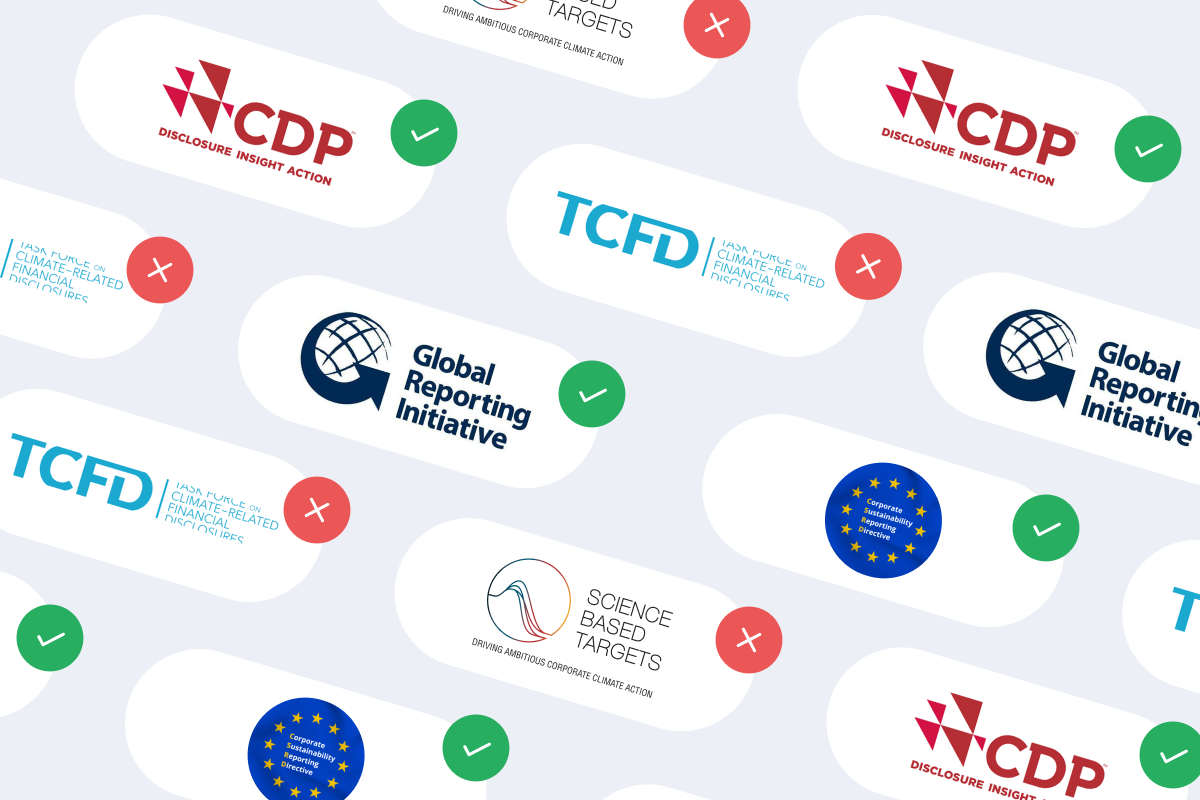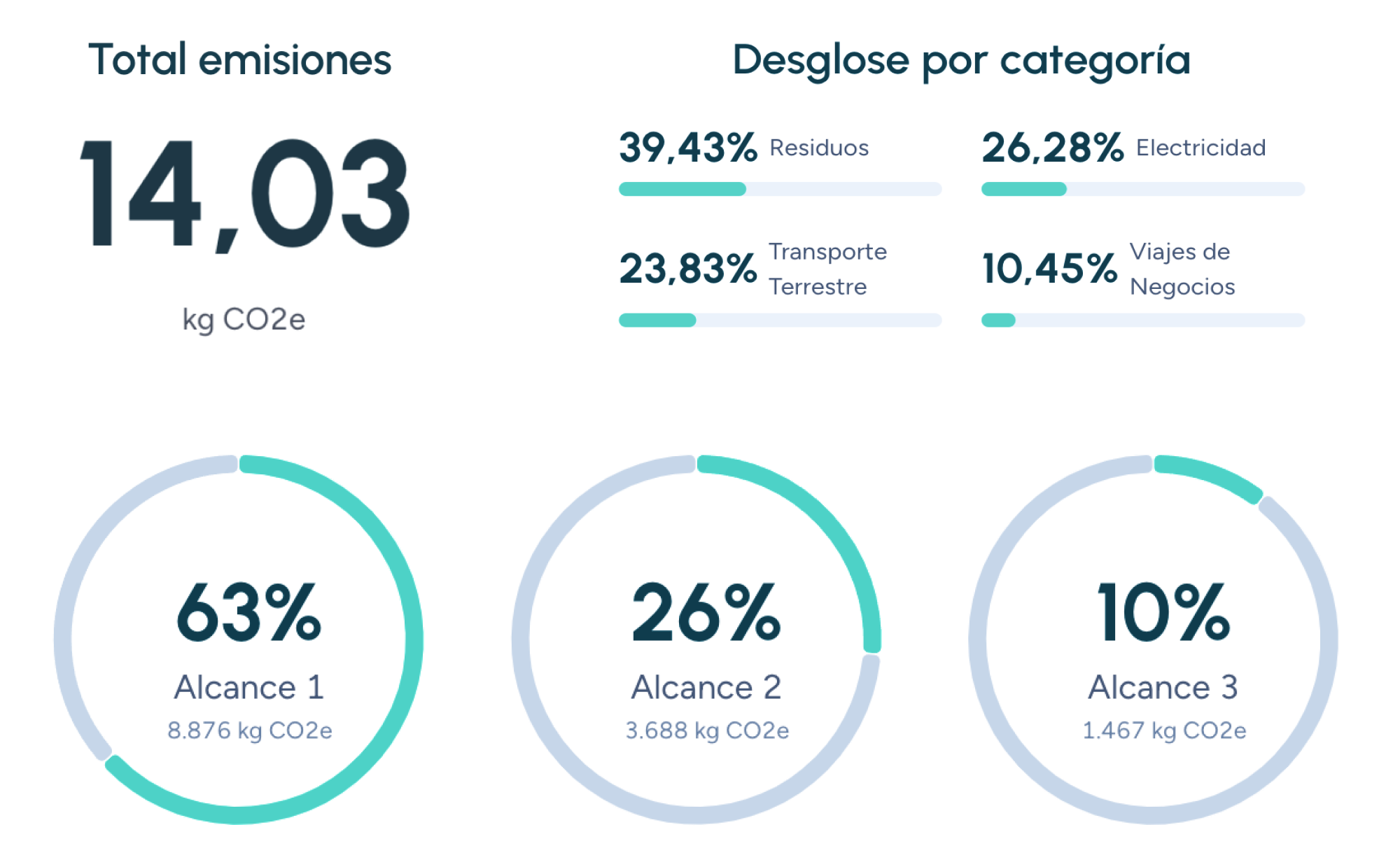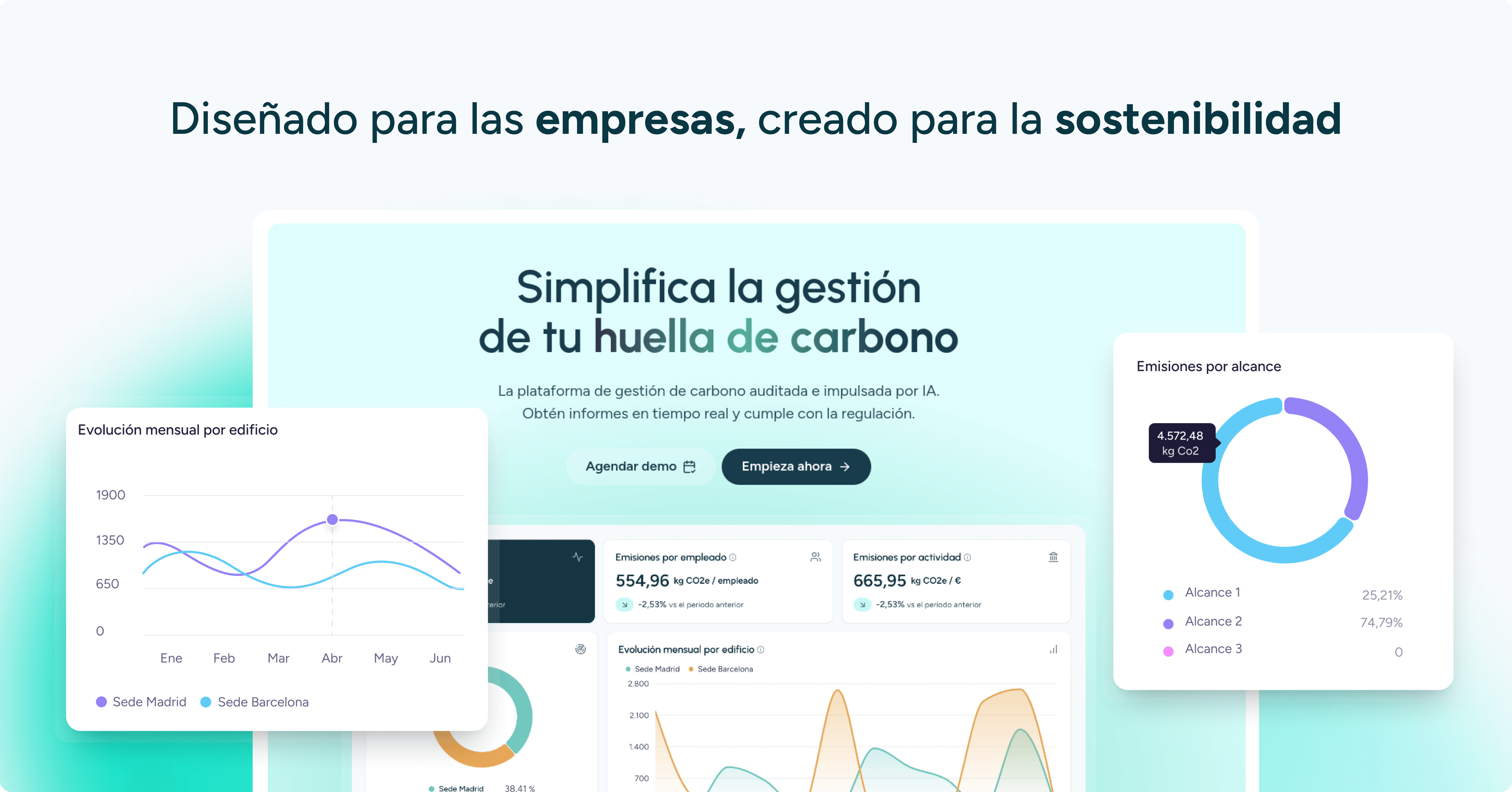Back to the blog
How to obtain Sustainability Certifications: Types and how your company can achieve them
Andrés Cester
CEO & Co-Founder
On the journey toward corporate sustainability, obtaining a sustainability certification is one of the most relevant regulations and standards. It is a tool that identifies an organization as committed to environmental and social responsibility principles.
To achieve this certification, meeting a series of requirements is essential. Below, we outline the steps necessary to reach this goal.
How to obtain Sustainability Certification
Each sector and certification body may have specific requirements. Here are the most common steps to qualify for sustainability certification:
Phase 1: Understanding and planning
This phase focuses on understanding certification requirements and planning how the organization will meet them.
1. Identify standards and regulations
Some of the most recognized international sustainability standards include:
- ISO 14001: An international standard for environmental management that helps organizations identify, manage, and control their environmental impacts.
- ISO 14064: A standard specifying principles and requirements for the quantification and reporting of greenhouse gas (GHG) emissions and removals.
- EMAS (Eco-Management and Audit Scheme): A voluntary EU system that recognizes organizations with environmental management systems and verified environmental statements.
- GRI (Global Reporting Initiative): A standard for sustainability reporting providing a comprehensive framework for reporting on an organization’s economic, environmental, and social performance.
2. Double Materiality assessment
A double materiality assessment is fundamental for identifying the most significant environmental and social impacts of the organization, considering both:
- Internal perspective: How sustainability issues affect the organization.
- External perspective: How the organization impacts sustainability.
Key areas include:
- Environmental impacts: GHG emissions, water and energy consumption, waste generation, pollution, etc.
- Social impacts: Human rights, working conditions, health and safety, and local community impact.
3. GAP analysis
After identifying certification requirements and material topics, perform a GAP analysis to determine the difference between current practices and standard requirements.
4. Action plan
Develop a detailed action plan to address identified gaps, including:
- Specific and measurable objectives: Set clear goals for each area of improvement.
- Timelines: Define realistic deadlines for implementing actions.
- Necessary resources: Allocate human, financial, and technical resources.
- Responsibilities: Assign responsibilities for each task and activity.
Phase 2: Implementation and management
This phase involves executing the actions outlined in the plan and managing data and information systems.
1. Data management and information systems
Implement robust systems for collecting, storing, and managing environmental data. These systems should enable:
- Accurate and reliable data collection: Ensure data quality from the source.
- Secure and accessible storage: Protect data integrity and availability.
- Data analysis and reporting: Simplify report generation and progress tracking.
2. Accuracy and consistency
Establish processes to ensure data accuracy, integrity, and consistency, including:
- Data validation: Verify data accuracy through quality checks.
- Documentation: Record data collection and management processes.
- Internal audits: Conduct periodic audits to assess system effectiveness.
3. Integration and reporting
Incorporate certification requirements into sustainability strategies and daily operations by:
- Embedding sustainability in company culture: Foster environmental awareness at all levels.
- Aligning practices with certification requirements: Ensure daily operations comply with established standards.
- Preparing sustainability reports: Document environmental performance transparently and comprehensively.
Phase 3: Verification and external assurance
This phase involves third-party verification to ensure compliance with certification requirements.
1. Report preparation
Prepare reports for third-party verification, ensuring they are:
- Complete and accurate: Include all relevant and verifiable information.
- Compliant with certification requirements: Follow established guidelines and standards.
- Transparent and understandable: Present information clearly and accessibly.
2. Select a verifier
Choose a recognized and accredited verification body to ensure certification credibility. Consider:
- Experience and reputation: Select a verifier with a proven track record in sustainability certifications.
- Accreditation: Ensure the verifier is accredited by a recognized body.
- Independence: Verify that the entity is independent of the organization and free from conflicts of interest.
Phase 4: Training, awareness, and continuous improvement
This phase focuses on employee training, sustainability awareness, and ongoing environmental management system improvements.
1. Training and awareness
Educate all organizational levels about environmental standards and sustainability’s importance through:
- Certification-specific training: Provide detailed information on certification requirements.
- Promoting a sustainability culture: Encourage environmental awareness and individual responsibility.
- Internal communication: Keep employees informed about sustainability progress and achievements.
2. Continuous monitoring and improvement
Implement a system to monitor sustainability indicators and adjust practices as needed, including:
- KPI monitoring: Regularly track progress toward sustainability goals.
- Data analysis: Identify areas for improvement and optimization.
- Environmental management system reviews: Adapt systems to changing needs and regulations.
Phase 5: Communication and stakeholder engagement
This phase emphasizes transparent communication and active stakeholder participation.
1. Stakeholder communication and engagement
Maintain open and transparent dialogue with stakeholders, including employees, customers, investors, and communities, by:
- Communicating sustainability efforts and progress: Share initiatives and results.
- Involving stakeholders in decision-making: Consider their perspectives and needs.
- Addressing concerns and suggestions: Respond to stakeholder questions and concerns.
Benefits of Sustainability Certification
Obtaining sustainability certification offers significant advantages, including:
- Enhanced reputation: Demonstrates the company’s commitment to sustainability, improving its image among customers, investors, and society.
- Cost reduction: Sustainable practices can result in significant savings in energy, water, and materials.
- Legal compliance: Ensures compliance with environmental regulations, avoiding penalties.
- Market access: Increasingly, international markets require sustainability certifications.
- Customer attraction: Conscious consumers prefer products and services from sustainable companies.
- Talent attraction: Sustainability is a key factor in attracting and retaining talent.
- Financing access: Financial institutions often offer favorable conditions to companies with strong environmental performance.
Let Manglai help you achieve Sustainability Certification
At Manglai, we provide comprehensive support throughout the certification process—from carbon footprint measurement to report preparation and automated MITECO certification management. Our team of experts will help you achieve your sustainability goals and gain the recognition your company deserves.
Andrés Cester
CEO & Co-Founder
About the author
Andrés Cester is the CEO of Manglai, a company he co-founded in 2023. Before embarking on this project, he was co-founder and co-CEO of Colvin, where he gained experience in leadership roles by combining his entrepreneurial vision with the management of multidisciplinary teams. He leads Manglai’s strategic direction by developing artificial intelligence-based solutions to help companies optimize their processes and reduce their environmental impact.
Content
Companies that already trust manglai

Implementing the GLEC Framework in Logistics: Emissions Calculation and Fleet Optimization
Discover how to apply the GLEC Framework to measure logistics emissions, comply with ISO 14083, and optimize fleets.
10 November, 2025
How to Communicate your Decarbonization Strategy and Avoid Greenwashing
Learn how to communicate your decarbonization strategy with transparency and verified data. Avoid greenwashing and build customer trust.
15 October, 2025
Transition Risk: What it means for Corporate Strategy
Learn how businesses can navigate transition risks related to climate policies and economic shifts.
14 May, 2025
Guiding businesses towards net-zero emissions through AI-driven solutions.
© 2025 Manglai. All rights reserved
Política de Privacidad


